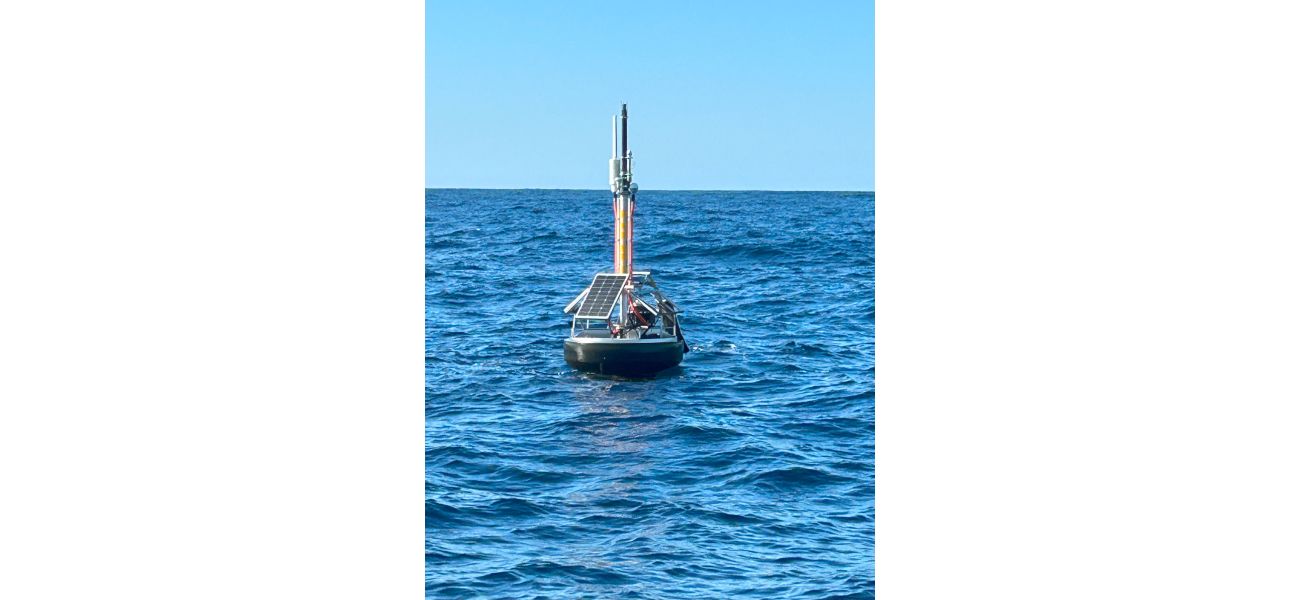A strange 15m-tall object floating near Australia is trying to communicate with outer space.
A team of Australian researchers has recently launched a new optical system to assist NASA's latest satellite mission.
November 5th 2024.

Have you ever been out at sea and wondered if you were seeing a boat or a buoy in the distance? Well, if you find yourself off the coast of Western Australia near Rottnest Island, you may spot a peculiar 15-meter-tall buoy floating in the water. But don't be fooled by its appearance, as this high-tech contraption is actually an optical system that has just been launched by a team of Australian researchers in collaboration with NASA's latest satellite mission.
Known as the Marine Optical Network or MarONet, this impressive system is equipped with sensors designed to capture the color of the ocean. Its tall stature allows it to reach areas of the ocean's surface that are not easily accessible, making it a valuable tool for collecting data. This data plays a crucial role in verifying observations made by the PACE satellite from thousands of kilometers above the Earth.
Professor David Antoine, head of Curtin University's Remote Sensing and Satellite Research Group, explains that the ocean's color is not just a simple shade of blue. In fact, it can vary in different areas due to the presence of single-celled plants called phytoplankton. These tiny plants contain chlorophyll and absorb blue light, resulting in a blue-green hue in certain parts of the ocean.
But phytoplankton are not just important for their role in the ocean's color. They are also essential for marine life as they serve as a vital food source. In addition, they produce more than half of the world's oxygen and absorb a significant amount of carbon dioxide, making them crucial in regulating the Earth's climate.
To accurately measure the levels of algae in the ocean, sensors on the MarONet buoy capture and analyze sunlight reflected off the water. This information is then transmitted to shore via the mobile network, where it is used to fine-tune the satellite's sensors for more precise ocean monitoring. According to project lead engineer Andrew Gray, the location of the buoy near Rottnest Island is ideal for accurate calibration due to the unique oceanic conditions and clear atmosphere.
The MarONet buoy will also work in conjunction with sea sensors off the coast of Hawaii, which have been in operation for over 20 years. Together, these systems will provide valuable data and insights into the health of our oceans, helping us better understand and protect this vital ecosystem.
Known as the Marine Optical Network or MarONet, this impressive system is equipped with sensors designed to capture the color of the ocean. Its tall stature allows it to reach areas of the ocean's surface that are not easily accessible, making it a valuable tool for collecting data. This data plays a crucial role in verifying observations made by the PACE satellite from thousands of kilometers above the Earth.
Professor David Antoine, head of Curtin University's Remote Sensing and Satellite Research Group, explains that the ocean's color is not just a simple shade of blue. In fact, it can vary in different areas due to the presence of single-celled plants called phytoplankton. These tiny plants contain chlorophyll and absorb blue light, resulting in a blue-green hue in certain parts of the ocean.
But phytoplankton are not just important for their role in the ocean's color. They are also essential for marine life as they serve as a vital food source. In addition, they produce more than half of the world's oxygen and absorb a significant amount of carbon dioxide, making them crucial in regulating the Earth's climate.
To accurately measure the levels of algae in the ocean, sensors on the MarONet buoy capture and analyze sunlight reflected off the water. This information is then transmitted to shore via the mobile network, where it is used to fine-tune the satellite's sensors for more precise ocean monitoring. According to project lead engineer Andrew Gray, the location of the buoy near Rottnest Island is ideal for accurate calibration due to the unique oceanic conditions and clear atmosphere.
The MarONet buoy will also work in conjunction with sea sensors off the coast of Hawaii, which have been in operation for over 20 years. Together, these systems will provide valuable data and insights into the health of our oceans, helping us better understand and protect this vital ecosystem.
[This article has been trending online recently and has been generated with AI. Your feed is customized.]
[Generative AI is experimental.]
0
0
Submit Comment





